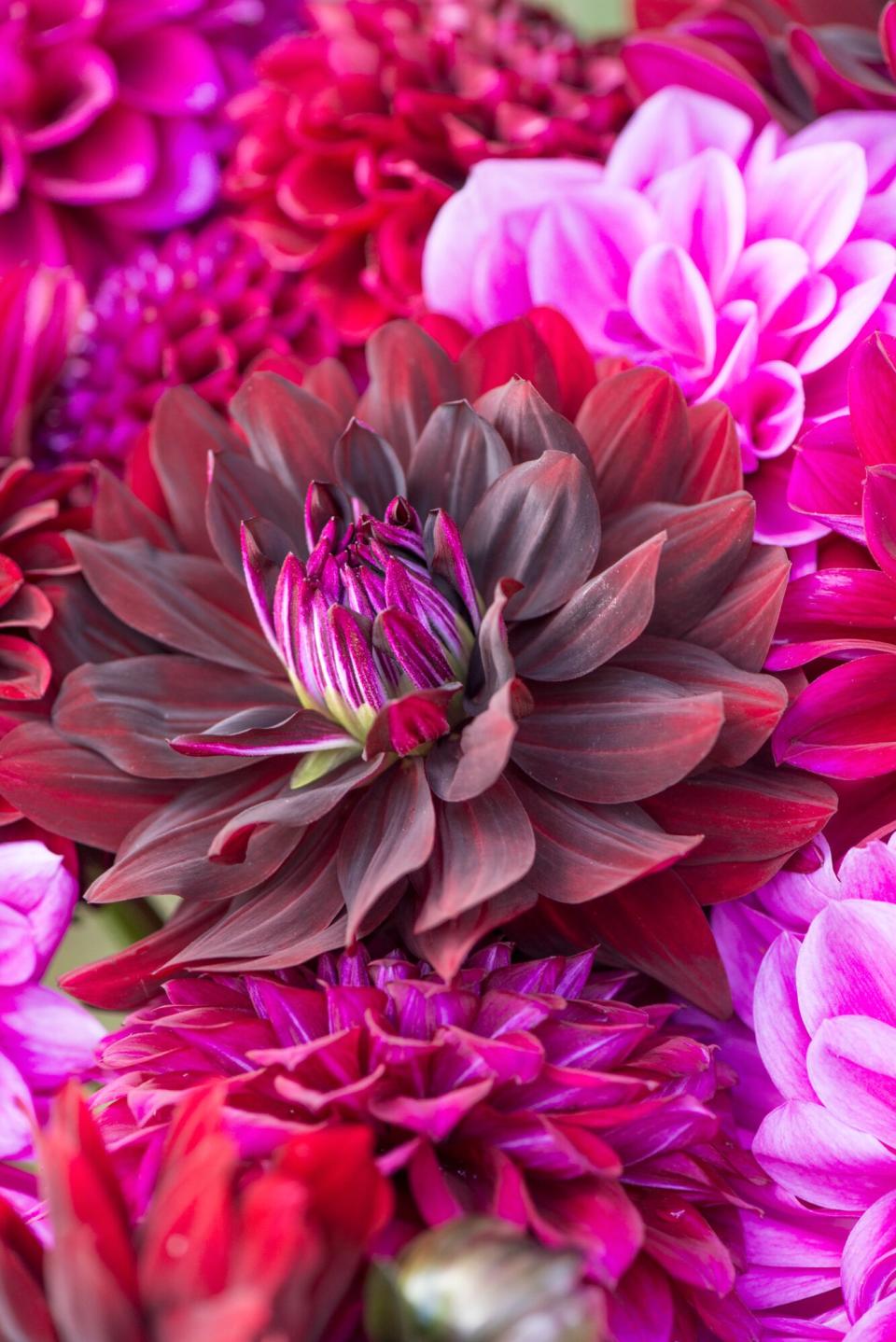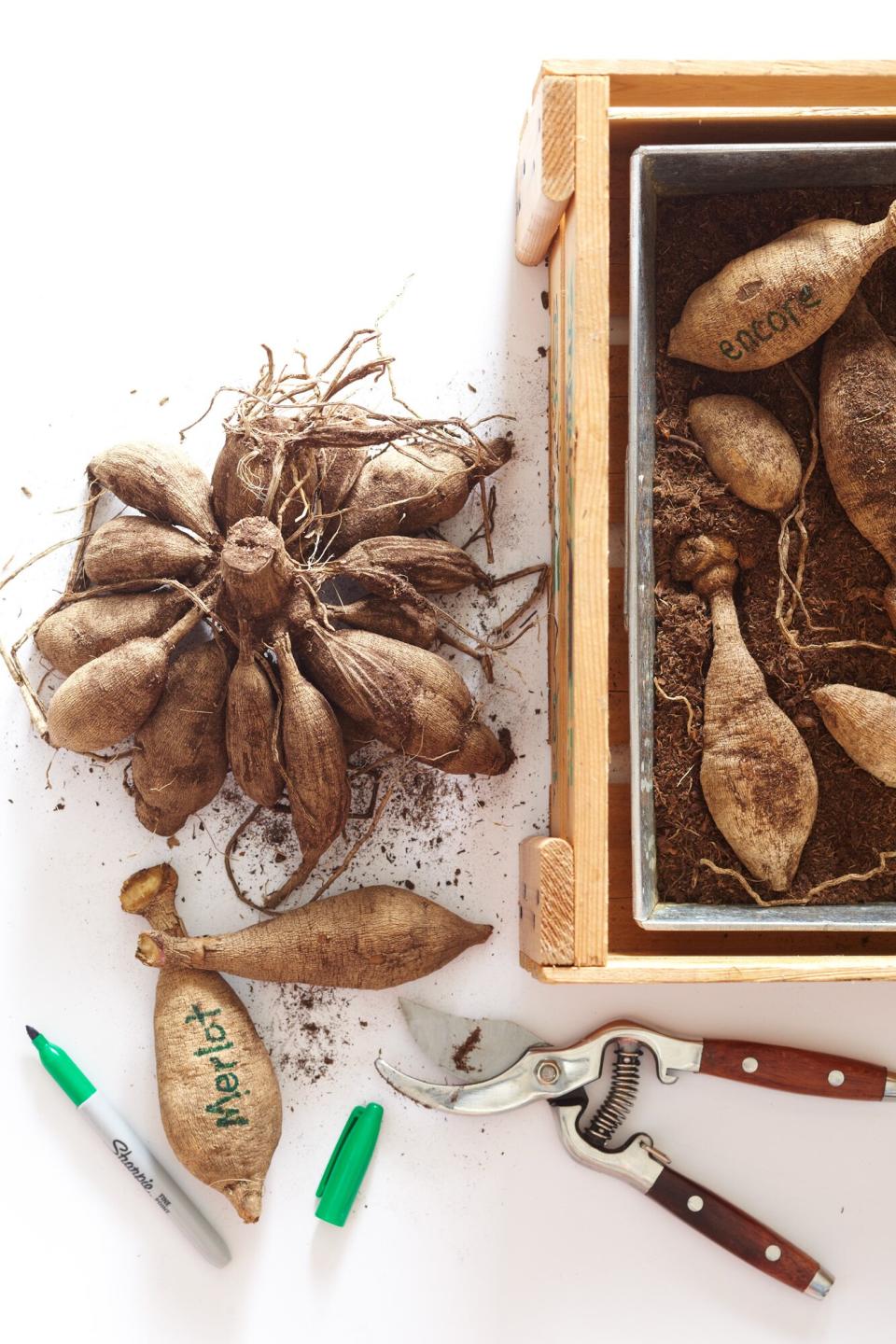Are Dahlias Perennials That Can Survive Winter? The Answer Depends on Your Climate
No wonder many dahlia growers find themselves asking, "are dahlias perennials or annuals?" Dahlias often bloom with the exuberance of favorite annual plants like zinnias and marigolds. From mid-summer until frost, they'll unfurl flowers ranging from tiny, petal-packed, button-like blossoms to blooms that are bigger than a dinner plate. However, these plants grow from bulb-like tubers that can survive winters like perennial plants do. To ensure your dahlias come back next year, you may have to help them, depending on your growing zone. Here's what you need to know to successfully overwinter dahlia tubers to enjoy them year after year.

Kindra Clineff
Are Dahlias Perennial in Your Zone?
Dahlias are native to the mountains of northern Mexico. They are hardy, or perennial, in tropical and warm climates, springing up from the ground each spring. Generally, dahlias are perennial in Zones 8 and above. In Zones 7 and below, dahlia's fleshy roots—called tubers—are killed by cold temperatures.
Related: What Is Your Hardiness Zone? It's the Secret to Your Gardening Success
If you garden in Zone 7 and below, you don't have to say goodbye to your dahlias and begin with fresh tubers next year. Overwinter dahlias by digging them up in late fall and saving them in a frost-free place until it's time to replant in spring.
How to Overwinter Dahlias
Dahlias can be a bit tricky to dig up and save over the winter. In fact, many cold-region gardeners opt to just grow dahlias as annuals, buying new plants each year. Overwintering dahlias takes patience, persistence, and a little bit of trial and error.
Related: 5 Little-Known Facts About Dahlias
Moisture is a common cause of overwintering trouble. Too much moisture or too little spells doom for dahlia tubers. Poll a few dahlia experts, and you'll come away with an array of tips and tricks for getting the balance of moisture just right. But in essence, these all boil down to five key steps to overwintering success.
1. Wait It Out
Allow dahlia foliage to completely die back to the ground in fall before digging the tubers. While a light frost will damage flowers and some foliage, the plant will continue to actively grow. Wait to dig the tubers until a killing freeze zaps all the foliage. For best results, watch the forecast and leave tubers in the ground for a week or more after the killing freeze to allow them to continue maturing. Dig the tubers as soon as low temperatures regularly dip to freezing.
2. Dig Carefully
Dahlia tubers are soft and fleshy, and loosely held together by a network of underground stems. Lifting them out of the ground requires some gentleness to avoid damaging them. Use a potato fork or shovel to loosen soil all around the clump, working at least 1 foot away from the main stem. Carefully lift the clump of tubers out of the ground and brush away soil clinging to the individual tubers.
3. Cure Dahlia Tubers
The tubers are very soft when they come out of the ground in fall. Encourage them to harden or cure by spreading them out in a well-ventilated, shaded area for a few days. A covered porch or garage can be a great place to cure dahlias. Make sure to protect them from freezing temperatures.

Blaine Moats
4. Store Well
Moist, ventilated storage is key to overwintering dahlia tubers. A storage place that is damp, but not ventilated, will cause tubers to rot. A location that is well-ventilated without adequate moisture will cause tubers to dry out and shrivel up. Experts recommend balancing moisture and ventilation by packing tubers in a ventilated box or basket. Place the tubers upside down, allowing plenty of space between the clumps.
Test Garden Tip: Use a permanent marker to label the tubers with the variety names so you don't have to keep track of labels.
Cover the clumps with a 4- to 6-inch-layer of moist vermiculite or fine wood chips, such as commercially sold pet bedding. Exactly how wet the vermiculite or wood chips should be is dependent on the humidity in your storage area. Begin by creating a packing material that is less moist. Then you can easily add water if tubers appear to be drying out. Store the ventilated box or basket in a garage, basement, or minimally heated place that is between 35 and 50°F. Avoid locations that have hot or cold drafts, or are too damp or extremely dry.
5. Check In
Pull back the packing material and check tubers every couple of weeks. If the tubers appear to be dry or shriveling, sprinkle the media lightly with water. Get a jump start on the growing season by planting tubers in pots about 4 weeks before the last spring frost date. Grow them in a bright, sunny window or under grow lights and transplant into the garden when all danger of frost has passed.

